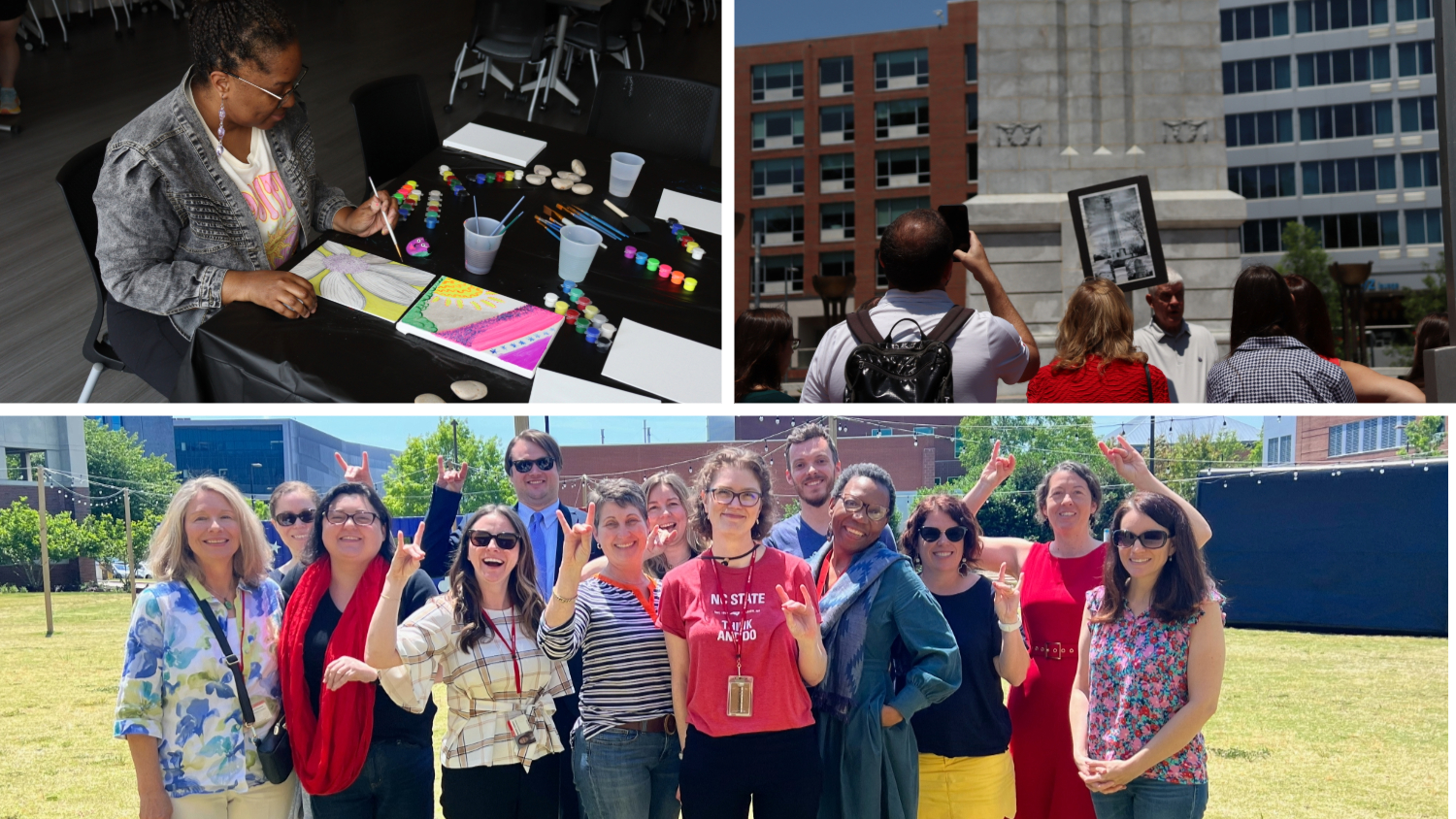NC State employees are rising to meet the unique and evolving challenges the COVID-19 pandemic poses to our daily operations. Many of our employees have transitioned to remote work and have kept up with unprecedented work demands, all while managing personal and family needs and stressors. That’s why it’s more important than ever for supervisors and campus leaders to recognize our employees, all of whom make NC State great.
University Human Resources has tasked a multidisciplinary team with enhancing NC State’s employee recognition and appreciation programs. The team’s goal is to help create a culture of continuous appreciation and recognition at the university. UHR will share more information on the team’s work in the coming months.
A study conducted by the Society for Human Resource Management found that 79% of employees say recognition makes them work harder. Here are some resources and tips to help supervisors and co-workers show appreciation and recognition to employees.
Personalized Recognition
One size does not fit all when recognizing employees. Some employees prefer public praise, while others favor a one-on-one approach. But some supervisors make the mistake of recognizing employees in the manner in which they prefer to be recognized, which can be counterproductive. For example, celebrating a very private employee in a public format may cause the employee to feel anxious or discouraged. Before recognizing an employee, take these considerations into account:
- Get to know your employees and ask them whether they prefer public or private recognition.
- Talk to your employees about the type of work they would like to be recognized for (e.g., teamwork, individual achievements or completing a big project).
- Find out how often your employees like to be recognized. Some may want frequent recognition or affirmation, and others might only find it necessary after achieving a major goal.
- Notice how your employees react to recognition. If they seem uncomfortable, adjust your recognition method.
Promote Peer-to-Peer Recognition
Many employees value recognition from campus leaders. However, peer-to-peer recognition can also be effective. Supervisors are encouraged to:
- Motivate team members to recognize each other.
- Encourage employees to send notes of appreciation to their colleagues or to praise them (if desired by the employee) in team huddles.
- Promote NC State programs designed for peer recognition, such as Pride of the Wolfpack.
- Create their own peer-to-peer recognition program.
Timely Recognition
Supervisors shouldn’t wait for annual recognition programs, like service awards, end-of-year academic ceremonies and employee appreciation events, to recognize employees. If an employee achieves a major accomplishment, provides exceptional customer service or simply completes a task, praise the employee immediately. If you wait to commend the employee, you may inadvertently dull the value of the recognition. Our employees are important. Show them they are valued. Start morning huddles with a moment of praise. For instance, share examples of how your employees’ outstanding work is affecting the university. When you show your employees how they are supporting the mission and success of NC State, it goes a long way toward instilling institutional pride.
Recognize Small Achievements
Business as usual does not apply during COVID-19. For many during this crisis, completing an ordinary daily task is an extraordinary act. Make sure you recognize this, especially for employees who are tasked with caring for children or family members while also working from home.
Keep Your Team Connected
Now that most employees are working remotely and are removed from the energy and vibrancy of NC State’s campus, it’s easier than ever for employees to become disengaged and disconnected. Gather your team weekly or more often via Zoom or another video conferencing platform to stay connected. Create team projects that allow employees to work together virtually, to help mitigate any sense of isolation. Show your team you value their continued work during this unprecedented, stressful period.
Promote Professional Development and Continued Education
A great way to reward and recognize your employees is to encourage continued professional development. During the COVID-19 pandemic, there may be opportunities for your team to take online classes offered by Learning and Organizational Development. Showing your employees you care about their personal and professional growth during this time when they might feel stalled will go a long way.
Communicate
One of the best ways to show your employees you value and appreciate them is to provide clarity and communicate often. Our employees are probably feeling a sense of uncertainty as a result of COVID-19. Communicate NC State’s COVID-19 plans to your employees, and encourage them to take advantage of our COVID-19 resources. Creating a sense of certainty for your team through consistent, honest communication will help alleviate some of the stressors employees are facing.
Value Employees’ Well Being
With the COVID-19 pandemic continuing to affect employees’ daily lives, supervisors should encourage employees to make their own well-being and that of their families a priority. Showing you care about the health and well-being of your employees is one of the most effective ways to demonstrate appreciation. Be conscious of how your interactions with employees affect their well-being.
- Be considerate about how and when you communicate. Sending late-night emails or tasks may saddle employees with additional pressure or stress, disrupt their sleep patterns and affect their work-life balance. For matters that aren’t emergencies, set communication boundaries, and respect them.
- Show empathy. COVID-19 has placed unprecedented pressure and stress on employees. Do not assume your employees are OK. Check in with them. If they are feeling overwhelmed, collaborate with them to discover an effective way to move forward.
- Encourage your employees to use our resources related to COVID-19, including:
- Categories:



